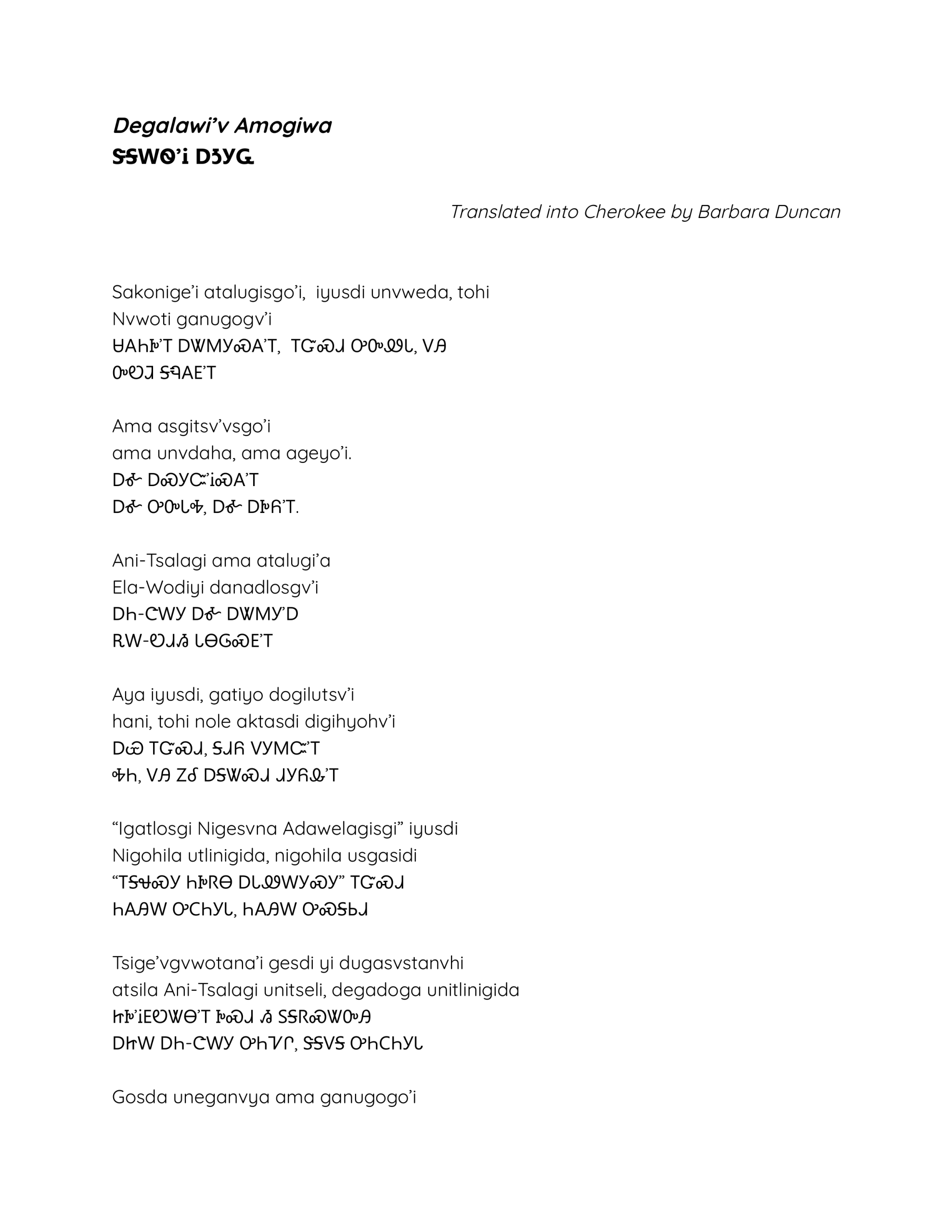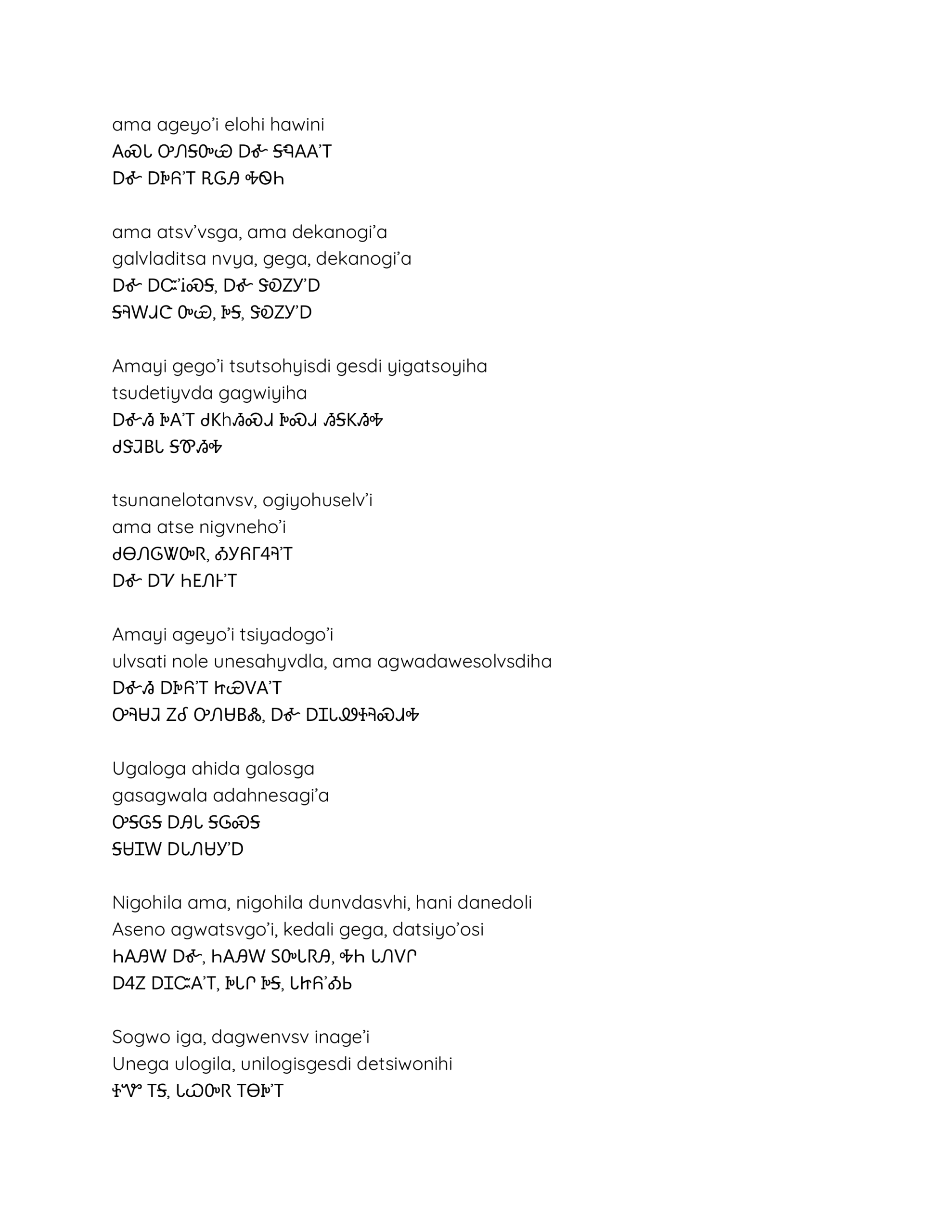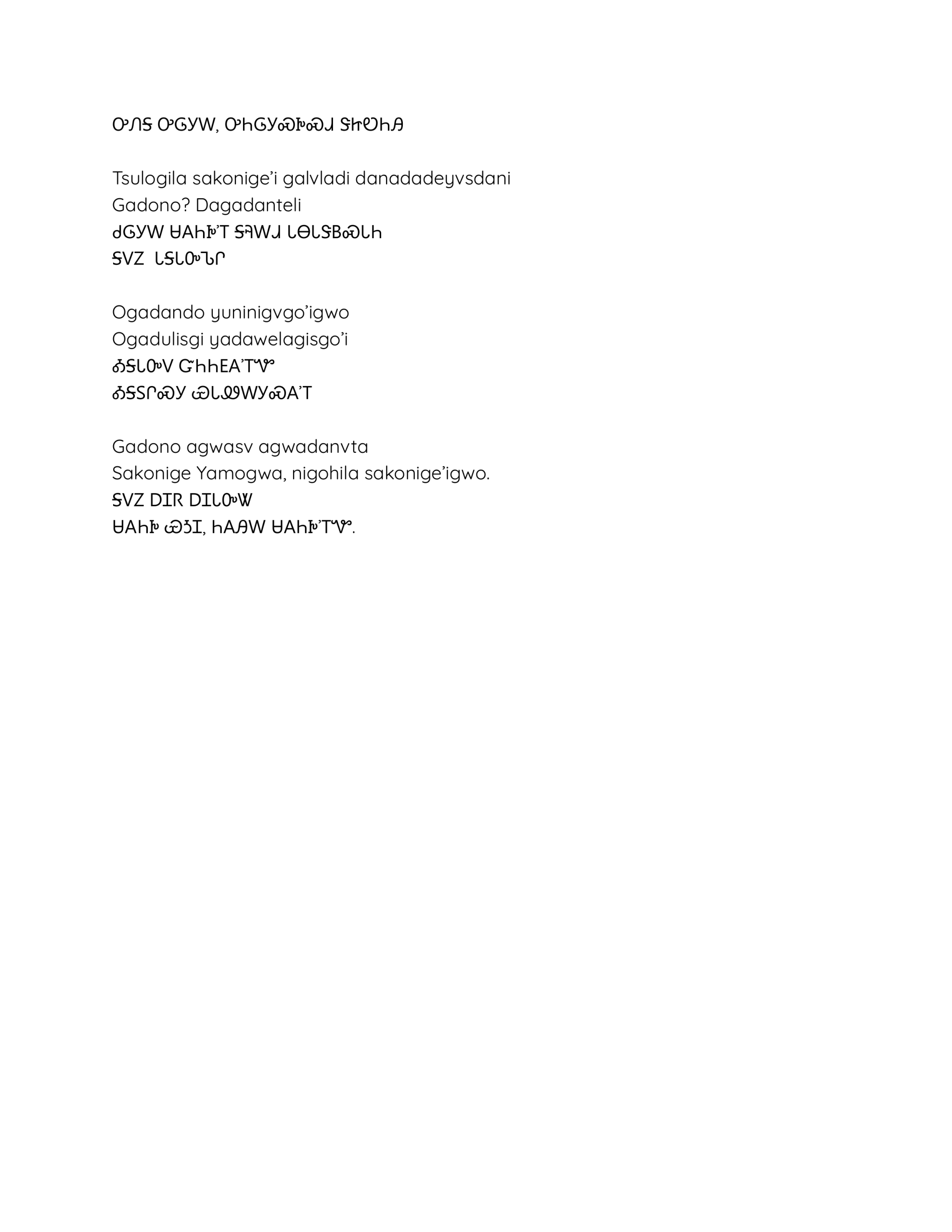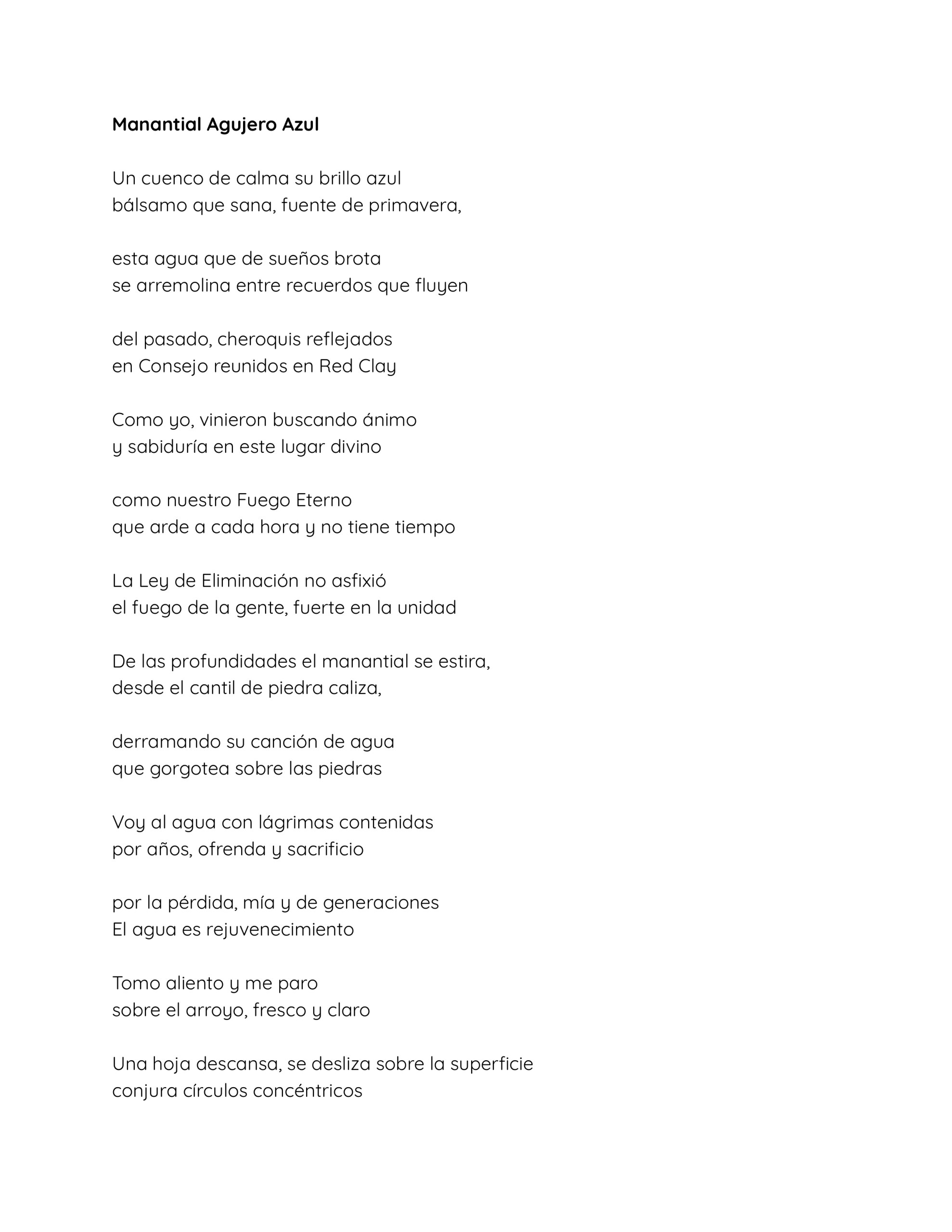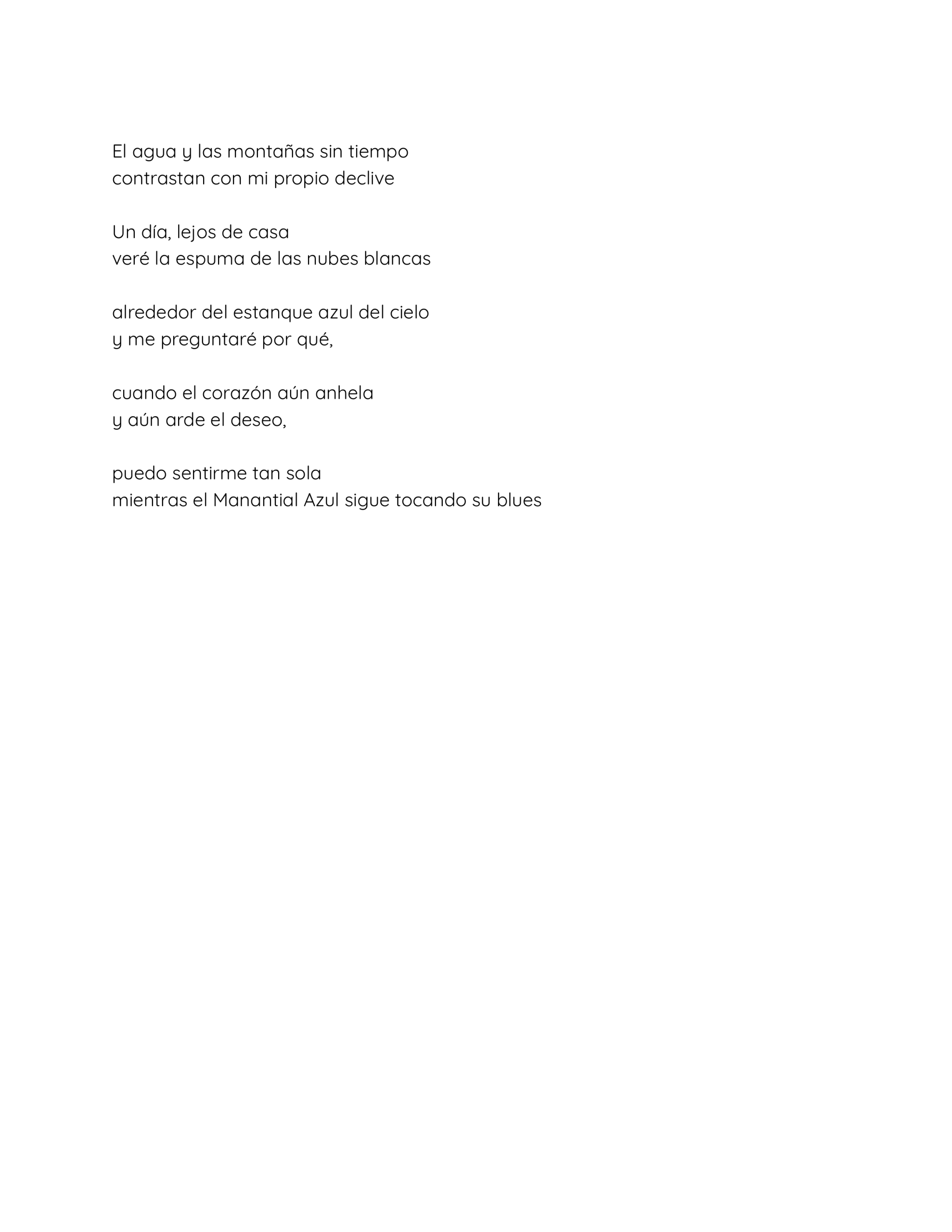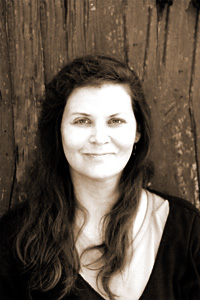
Kimberly L. Becker
Traducido del inglés al tsalagi (cheroqui) por Barbara Duncan
Traducido del inglés por Juan G. Sánchez Martínez
Kimberly L. Becker tiene cinco colecciones de poesía: Words Facing East (2010), The Dividings (2014), Flight (2021), The Bed Book y Bringing Back the Fire (ambos de 2022), y . Su obra aparece en numerosas publicaciones, entre ellas, Indigenous Message on Water, Women Write Resistance: Poets Resist Gender Violence, Tending the Fire: Native Voices and Portraits, Unpapered: Writers Consider Native American Identity and Cultural Belonging, y 23 Tales: Appalachian Ghost Stories, Legends, and Other Mysteries. El sitio web Poetry Daily publicó “Rivering”, el poema que da título a su sexto manuscrito. El séptimo, en construcción, se basa en la historia cheroqui de Uktena. Sitio web: www.kimberlylbecker.com
Declaración de la poeta
Soy de ascendencia mixta, la cual incluye a los Cheroqui, con los que me identifico, a pesar de que no soy miembro inscrito de esa nación. Soy del sureste de los Estados Unidos (nací en Georgia, me crié en Carolina del Norte) y siempre he tenido una relación mística con el agua. La temo y la venero a la vez. De niña, me arrastró la corriente en el Océano Atlántico. Pesqué mi primera trucha en un arroyo de montaña. Años después, probaría trucha recién pescada en el río Oconaluftee en Cheroqui, Carolina del Norte. Navegué en canoa por el río New River, que fluye hacia el norte. En la espiritualidad cheroqui, orar en presencia del agua es una tradición muy importante.
El manantial Blue Hole (Agujero Azul) está ubicado en lo que ahora es el Parque histórico estatal Red Clay, sitio de la última sede del gobierno cheroqui antes de que, en 1838, el ejército estadounidense hiciera cumplir la Ley de Eliminación de los Indios, proclamada en 1830, la cual dio lugar al Camino de las Lágrimas (Trail of Tears, 1830-1850). Este manantial fue la fuente de agua para los consejos cheroqui entre 1832 y 1837. Los cheroqui creen que los arroyos que vienen de las montañas son los senderos por los que llegamos al inframundo, y los manantiales en sus cabeceras son las puertas por las que entramos. Para penetrar, hay que ayunar, ir al agua y tener como guía a una de las personas del inframundo.
Sitio web del parque: https://tnstateparks.com/parks/info/red-clay
Cherokee
español
Alojamiento Web por || Indigenous Environmental Network
Arte Web por || Achu Kantule
